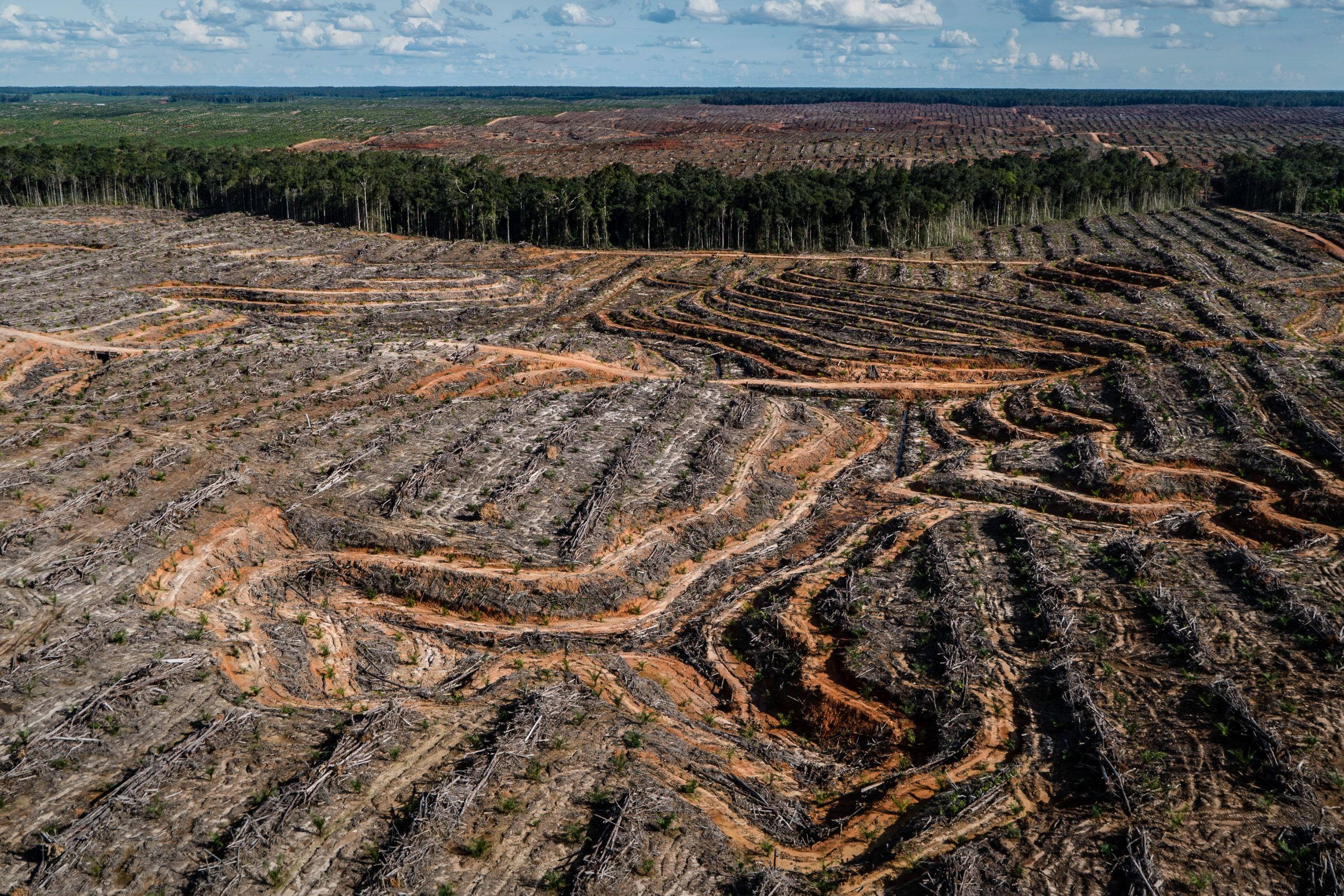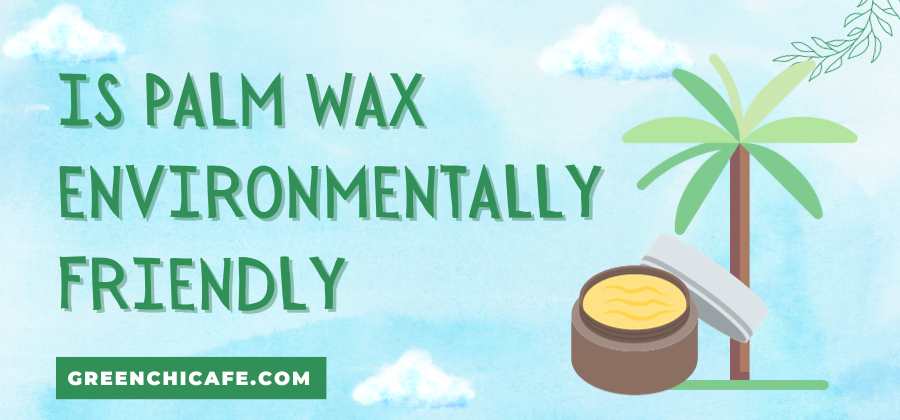Last Updated on June 3, 2024 by Annie Baldwin
Palm wax candles are all the rage right now for their clean-burning, toxin-free properties.
But with palm oil production wreaking havoc on rainforests, is palm wax really a sustainable option?
Let’s take a deep dive into the eco-friendly claims around this natural candle wax.
Is Palm Wax Environmentally Friendly?

Palm wax is generally not considered environmentally friendly.
The palm oil used to produce palm wax leads to deforestation, loss of biodiversity, and social issues when not sourced sustainably.
Sourcing certified sustainable palm oil can mitigate these impacts.
However, the majority of palm wax comes from non-sustainable practices that damage the environment.
Soy wax and beeswax are more eco-friendly alternatives.
Key Points
- Palm oil production causes deforestation and habitat destruction
- Palm wax contributes to these issues unless it is sustainably sourced
- Beeswax and soy wax are more eco-friendly candle wax options
Our Opinion
Based on the evidence, our experts believe palm wax cannot be considered environmentally friendly unless it comes from certified sustainable sources.
The majority of palm oil causes major environmental damage.
While responsibly sourced palm wax is better, beeswax and soy wax remain the most eco-conscious choices for consumers who want to avoid contributing to deforestation and habitat loss.
We recommend soy wax or beeswax for green-minded candle makers.
Is Palm Wax Sustainable?

The sustainability of palm wax comes down to the practices used to produce the palm oil that creates it. Palm wax made from organic, responsibly sourced palm oil can be a renewable, biodegradable alternative to paraffin wax. However palm wax from industrial plantations that replace rainforests can have serious environmental consequences.
The key is sourcing palm wax from producers using best practices:
- Growing oil palms without chemicals or clearing rainforests
- Harvesting oil through physical pressing, not chemical refining
- Ensuring fair labor practices for workers
- Committing to zero deforestation and protecting wildlife
When sourced this way, palm wax becomes a toxin-free, rapidly renewable resource. The oil palm trees it comes from are resilient and productive crops that act as carbon sinks when grown sustainably.
Companies like British cosmetics company Lush use 100% organic palm wax for their candles. This wax offers the luminous, clean-burning properties of palm without the eco-guilt. Properly produced, palm wax can provide a sustainable alternative to paraffin – which emits harmful chemicals when burned.
How Is Palm Wax Produced?
Palm wax comes from the oil produced by oil palm trees. To produce palm wax sustainably:
- Oil palm fruit bunches are harvested and pressed to extract crude palm oil. No chemicals are used in this physical pressing process.
- The crude oil then goes through a gentle steam distillation process to remove impurities. This produces refined, food-grade palm oil.
- The refined oil is hydrogenated, meaning hydrogen is added to convert the oil into a solid wax. This hydrogenation process is done without using the metal catalysts that create trans fats in many hydrogenated oils.
- The resulting palm wax is then filtered to remove any remaining impurities. What’s left is a crystalline, water-soluble, toxin-free natural wax.
- Coloring and scents can be added to tailor the wax for applications like candle making.
When produced using these careful, chemical-free techniques, palm wax offers a renewable and biodegradable alternative to paraffin – without the destructive environmental impact of unsustainable palm oil production. Choosing sustainably sourced palm wax is key to unlocking the benefits of this versatile natural wax.
What Are the Environmental Impacts of Palm Wax?

When sourced responsibly, palm wax can be an environmentally friendly alternative to petroleum-based waxes. Here are some of the key environmental considerations:
Sourcing
Seeking palm wax from suppliers that use organic and sustainable practices helps reduce the ecological impact of production. Opting for RSPO-certified sources ensures no deforestation or unethical labor practices.
Renewability
Palm trees yield more wax per acre than soy or other oil crops. As a rapidly renewable resource, palm wax is replenished faster than fossil fuels.
Biodegradability
Pure palm wax breaks down readily in the environment versus paraffin wax that persists. This makes it ideal for products designed to avoid long-term pollution.
Burning
Palm wax candles and cosmetics burn cleaner than petroleum versions. The wax itself releases no toxins and the soot particles are less harmful.
Processing
With minimal refining needed, palm wax production requires less energy input than highly refined petroleum waxes. The hydrogenation process skips caustic chemicals.
Is Palm Wax Renewable?
Yes, palm wax is considered a renewable resource. The wax is harvested from the fruit of oil palm trees, which can be tapped for over 20 years without replanting. As the trees are not cut down during wax production, the source material regenerates itself naturally over time. This sets palm wax apart from finite fossil fuel sources like paraffin.
Palm trees also have a far higher yield of oil per acre than other oil seed crops. The trees produce up to 4 tons of oil per hectare annually, compared to just .4 tons for soy. This productivity allows palm wax to be generated in substantial quantities each year through a replenishable agricultural process.
With proper care for the trees and avoidance of deforestation in sourcing, palm wax can provide a high-volume, renewable alternative to petroleum waxes. This renewable nature makes it attractive to manufacturers looking for sustainable ingredients. When produced ethically, palm wax offers an abundant resource that can be renewed indefinitely.
How Does Palm Wax Compare to Other Waxes?
Palm wax stands out from other natural waxes in several ways. Compared to beeswax, palm wax has a higher melting point, creating harder candles that burn slower and cleaner. It’s also more plentiful and affordable than scarce beeswax. When hydrogenated for flexibility, palm wax makes a smooth, non-greasy lip balm or lotion bar not achievable with waxy beeswax.
Versus soy wax, palm wax offers superior scent throw and surface adhesion for candles. This allows for vivid fragrance and fewer issues with wet spots. Palm also has a more neutral color than soy’s yellow hue. In soap, palm wax creates a hard bar with a rich, stable lather not possible with softer soy wax.
Unlike paraffin, a petroleum byproduct, palm wax is 100% natural and biodegradable. It’s free of toxins and burns cleaner than paraffin, which can emit carcinogens.
FAQ
Which Wax Is Most Environmentally Friendly?
Beeswax and soy wax are considered the most eco-friendly candle wax options. Beeswax is a natural byproduct of honey production and soy wax is made from soybean oil. Both are renewable, biodegradable resources.
What Is the Problem With Palm Wax?
The main issue with palm wax is that palm oil production leads to deforestation, habitat loss, and negative social impacts. Unless the palm oil is certified sustainable, palm wax cannot be considered eco-friendly.
What Are the Cons of Palm Wax?
The cons of palm wax are that it contributes to unsustainable palm oil production if not sourced responsibly. This leads to deforestation, loss of biodiversity, and social issues. There are also concerns about air pollution from palm oil processing.
Is Palm Wax Better Than Soy Wax?
Soy wax is considered more eco-friendly than palm wax. Soy wax comes from a renewable and abundant resource that does not lead to deforestation. Palm wax contributes to environmental destruction unless the palm oil is sustainably sourced.
Conclusion
Palm wax cannot be considered environmentally friendly unless it is sourced from certified sustainable palm oil producers. The majority of palm oil production causes deforestation, habitat loss, air pollution, and social issues. Soy wax and beeswax are more eco-friendly options. When sourced responsibly, palm wax can be a sustainable choice, but it requires careful sourcing. Overall, soy wax is a better choice for eco-conscious consumers.
